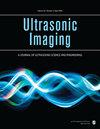基于深度学习的有限数据集三维超声图像手指关节自动分割
IF 2.5
4区 医学
Q1 ACOUSTICS
引用次数: 0
摘要
超声成像在评估与类风湿性关节炎(RA)早期相关的滑膜炎症方面已显示出良好的前景。滑膜的精确识别和炎症特异性成像生物标记物的量化是准确量化和分级类风湿性关节炎的关键环节。本研究提出了一种基于深度学习的方法,可自动分割受 RA 影响的手指关节超声图像中的滑膜。两种用于图像分割的卷积神经网络架构在有限数量的二维图像中进行了训练和验证,这些图像是从 N = 9 名 RA 患者获得的 N = 18 个三维超声体积中提取的,并带有稀疏的滑膜地面实况注释。为了提高训练数据集的多样性和规模,采用了各种增强策略。通过六倍交叉验证,利用几何和噪声增强变换得到了最高的骰子分数(0.768±0.031,N=6),以及最高的分离交叉分数(0.624±0.040,N=6)。此外,该分割模型还用于根据现有的稀疏注释,在超声体积中生成密集的三维分割图。所开发的技术有望促进利用超声成像进行 RA 筛查的工作流程更加高效和标准化。本文章由计算机程序翻译,如有差异,请以英文原文为准。
Automated Deep Learning-Based Finger Joint Segmentation in 3-D Ultrasound Images With Limited Dataset.
Ultrasound imaging has shown promise in assessing synovium inflammation associated early stages of rheumatoid arthritis (RA). The precise identification of the synovium and the quantification of inflammation-specific imaging biomarkers is a crucial aspect of accurately quantifying and grading RA. In this study, a deep learning-based approach is presented that automates the segmentation of the synovium in ultrasound images of finger joints affected by RA. Two convolutional neural network architectures for image segmentation were trained and validated in a limited number of 2-D images, extracted from N = 18 3-D ultrasound volumes acquired from N = 9 RA patients, with sparse ground truth annotations of the synovium. Various augmentation strategies were employed to enhance the diversity and size of the training dataset. The utilization of geometric and noise augmentation transforms resulted in the highest dice score (0.768 ±0.031,N=6),andintersectionoverunion(0.624±0.040, N = 6), as determined via six-fold cross-validation. In addition, the segmentation model is used to generate dense 3-D segmentation maps in the ultrasound volumes, based on the available sparse annotations. The developed technique shows promise in facilitating more efficient and standardized workflow for RA screening using ultrasound imaging.
求助全文
通过发布文献求助,成功后即可免费获取论文全文。
去求助
来源期刊

Ultrasonic Imaging
医学-工程:生物医学
CiteScore
5.10
自引率
8.70%
发文量
15
审稿时长
>12 weeks
期刊介绍:
Ultrasonic Imaging provides rapid publication for original and exceptional papers concerned with the development and application of ultrasonic-imaging technology. Ultrasonic Imaging publishes articles in the following areas: theoretical and experimental aspects of advanced methods and instrumentation for imaging
 求助内容:
求助内容: 应助结果提醒方式:
应助结果提醒方式:


